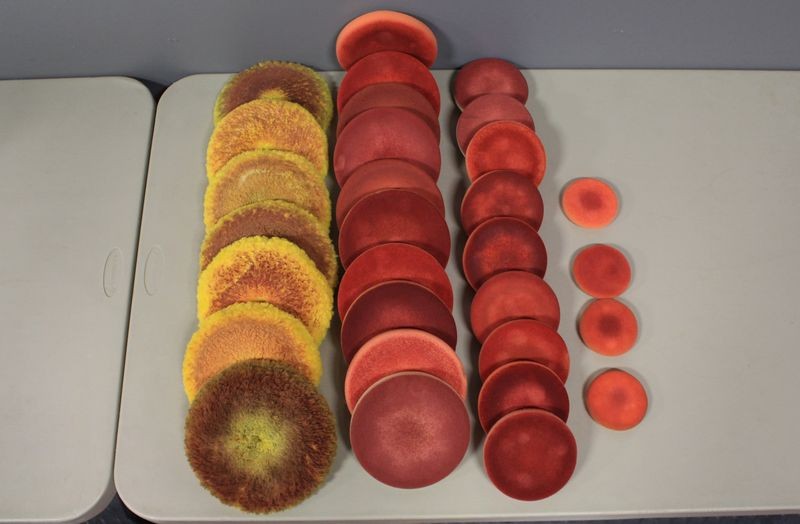Dr Oldz
New member
- Aug 31, 2010
- 4,462
- 0
Hello all!
I wanted to give some thoughts on pad usage and have an open discussion so please chime in here.
I always keep an open mind as far as detailing is concerned and I like to observe others in their process, learn and adapt to what is best for me. When I first joined this forum, I remember a post by Mike Phillips showing a car he compounded with pictures of the tools, buffing liquids and pad he used. All was on par except he used about 7 pads. 7 Pads???? I thought that was crazy. I was using 3 or 4 tops. I remember his post about cleaning on the fly and thought to myself, well he has an unlimited supply of pads and he is just doing this to save time. Well saving time was exactly what he was doing but not for the reason of an unlimited supply of pads.
As my process bettered, I found myself using more and more pads per detail. As most of us do, we prime the pad first. So changing pads more often means more priming and this more buffing liquid used. Secondly changing pads often means we need to have more pads. Let’s be honest here, pads are not cheap. It’s easier to buy 4 or 5 than it is a dozen. Then there is the flip side....
A fresh pads simply cuts/performs better since it isn’t saturated. As pads get saturated, it requires more passes to accomplish what a fresh pad would, costing more time. Time is money if you are detailing to make a profit. Pads simply last longer if you do not saturate them and abuse them over time also.
With buffing liquid technology getting better and better, I see a lot more products that require no priming or very little priming.
I often see the question on the forums “how many pads?” My answer is 2 part. If you are detailing for a profit, then 10-12. If you are a hobbiest, as many as you can comfortably afford.
To summarize: More pads = initial investment can be steep. Faster results. Better results. Long run savings on pads not wearing out as quick. Amount of product to prime pads is negligible but you will use more. More pad cleaning but easier sonce they aren’t as dirty and saturated.
Thoughts?
I wanted to give some thoughts on pad usage and have an open discussion so please chime in here.
I always keep an open mind as far as detailing is concerned and I like to observe others in their process, learn and adapt to what is best for me. When I first joined this forum, I remember a post by Mike Phillips showing a car he compounded with pictures of the tools, buffing liquids and pad he used. All was on par except he used about 7 pads. 7 Pads???? I thought that was crazy. I was using 3 or 4 tops. I remember his post about cleaning on the fly and thought to myself, well he has an unlimited supply of pads and he is just doing this to save time. Well saving time was exactly what he was doing but not for the reason of an unlimited supply of pads.
As my process bettered, I found myself using more and more pads per detail. As most of us do, we prime the pad first. So changing pads more often means more priming and this more buffing liquid used. Secondly changing pads often means we need to have more pads. Let’s be honest here, pads are not cheap. It’s easier to buy 4 or 5 than it is a dozen. Then there is the flip side....
A fresh pads simply cuts/performs better since it isn’t saturated. As pads get saturated, it requires more passes to accomplish what a fresh pad would, costing more time. Time is money if you are detailing to make a profit. Pads simply last longer if you do not saturate them and abuse them over time also.
With buffing liquid technology getting better and better, I see a lot more products that require no priming or very little priming.
I often see the question on the forums “how many pads?” My answer is 2 part. If you are detailing for a profit, then 10-12. If you are a hobbiest, as many as you can comfortably afford.
To summarize: More pads = initial investment can be steep. Faster results. Better results. Long run savings on pads not wearing out as quick. Amount of product to prime pads is negligible but you will use more. More pad cleaning but easier sonce they aren’t as dirty and saturated.
Thoughts?
